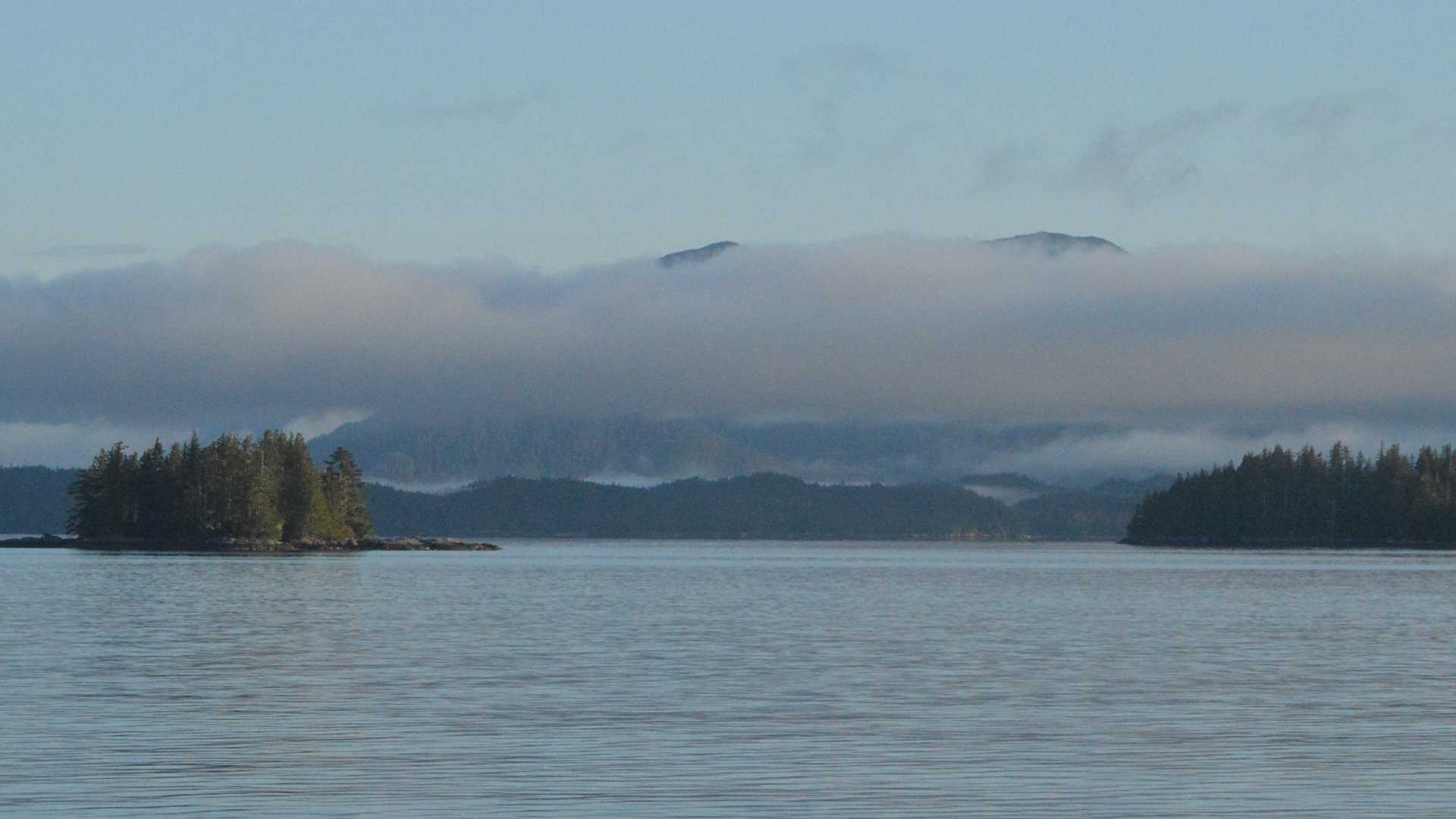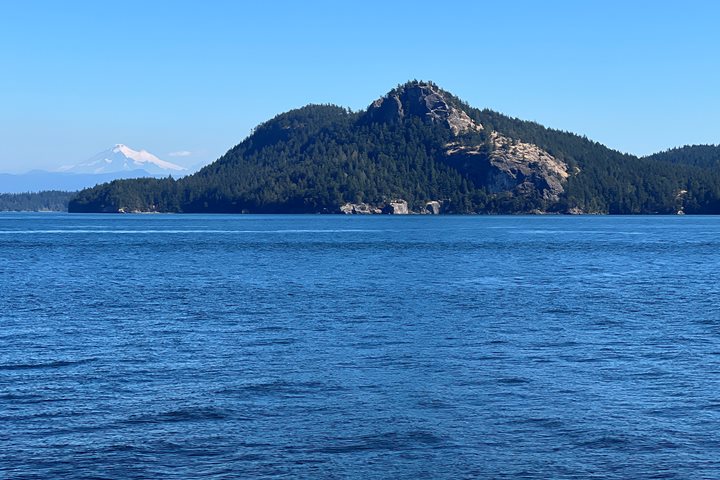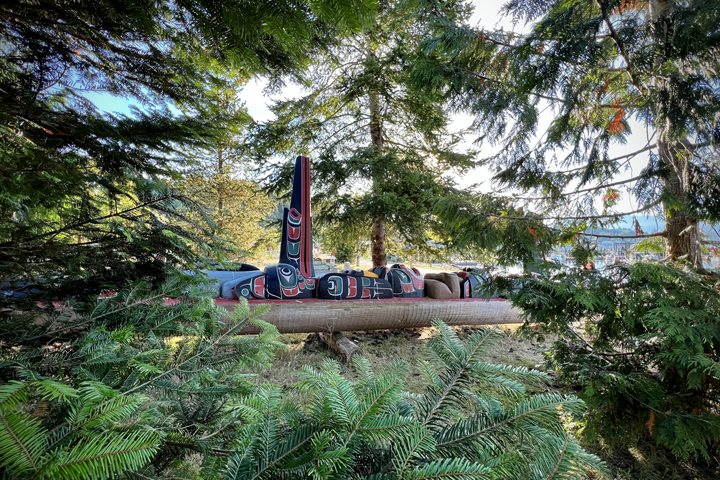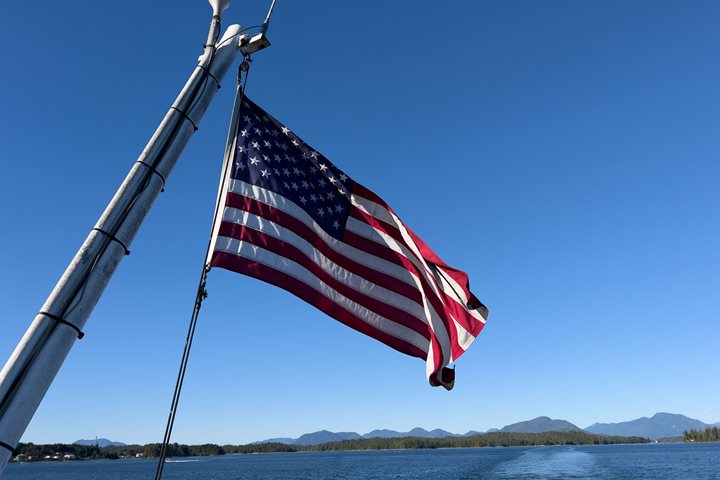This morning guests woke up to a beautiful scene of blue skies above, with mist being warmed off the coastal forests and mountains on either side. A classic image of mornings in the Pacific Northwest. The morning was spent keeping a keen eye on the water and shorelines looking for splashes and flashes – indications of wildlife to train our binoculars on. Mergansers, loons, and surf scoters were joined by the exhaling puffs of sea lion noses. Just as lunch was about to be called, higher blows were spotted on the shoreline – possibly a larger charismatic megafauna. The captain swiftly swung the ship around as we tried to identify who had left the clouds of mist close to the surface. We waited and waited some more, with some on the bow possibly doubting the existence of this mammalian myth. Finally, the creature had to take another breath and we could get a good view of the long dorsal curve followed by the short arc of a minke dorsal fin. Our first minke on this trip, and not a common sighting in this part of the world.
As guests were eating their lunch-time delicacies, the crew expertly maneuvered and anchored the National Geographic Sea Bird in Horsefly Cove. Zodiacs and kayaks were unloaded from the top deck, ready for explorers to investigate the shorelines from water level. The old growth forest of mixed trees gave evidence of how long ago the ice retreated from this region. A sharp line at the bottom of the forest delineated where terrestrial live could no longer survive, and wildlife that could survive inundation with salty water took over.
The intertidal range was marked with bands of bladderwrack seaweed, mussels, and barnacles – a few barnacles even made it on board for a short stint under the microscope. Through the cold clear water, marine life including echinoderms of several morphs could be seen. Sea urchins, stars and cucumbers were present in the shallows waiting for the tide to come back in so that they could feed on some of the higher dwellers.
As we moved towards cocktail hour and dinner, we headed northwards along Queen Charlotte Island to keep a keen eye out for the rarely sighted spirit bear…







